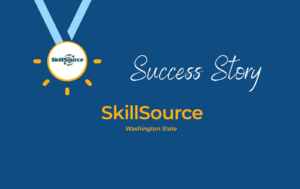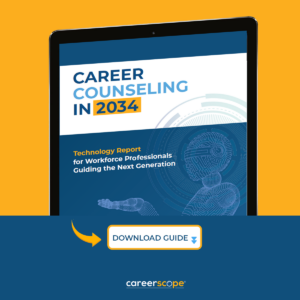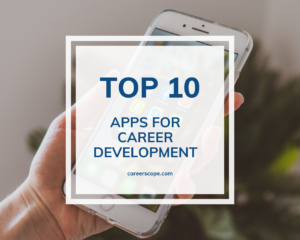Re-entering the workforce can be a daunting task. Whether people have taken time off to raise children, travel, recover from an illness, or for any other reason, jumping back into the job market can be challenging. Counselors recommend several strategic activities to boost skills, understanding, and value to potential employers. Investing in these actions can ensure a smoother transition.
Here are five key activities to consider:
1. Pursue an Apprenticeship
Apprenticeships are structured training programs that allow you to learn a trade by working under the close supervision of a seasoned professional. They blend on-the-job training with classroom instruction. There are several benefits to apprenticeships: gain practical experience, earn a wage while learning, build a network in your chosen field, and acquire nationally recognized certifications. Read our article “Utilizing Apprenticeships as Part of Your Career Strategy.”
How to get started: Look for opportunities in traditional fields (like plumbing or electrical work) and emerging sectors (like IT or green energy). In California, the Department of Industrial Relations is where an individual can go to explore apprenticeship programs. Apprenticeship.gov is a one-stop shop for career seekers.
2. Utilize Competency-Based Education (CBE)
CBE focuses on acquiring specific skills or competencies rather than completing a set amount of coursework in a specific time frame. The emphasis is on learning outcomes. There are many benefits to pursuing a competency-based education: learn at your own pace, increase flexibility (balancing work, family, and education), and demonstrate mastery of specific skills to employers.
In technical and vocational training, there are platforms that offer badges for specific skill mastery (for example, Google has one for SEO marketing). Many people utilize Coursera and edX MicroMasters to take graduate-level courses that can also count toward a master’s program. Southern New Hampshire University College for America caters to working adults and allows them to earn accredited degrees based on demonstrated competencies rather than credit hours.
How to get started: Many online institutions offer CBE programs. Research accredited institutions and courses that match your career goals. Learn more here from MyDegreeGuide.Org.
3. Identify Integrated Education and Training (IET) Programs for Your Career Path
An IET program must include three components: adult education and literacy activities, workforce preparation activities, and workforce training. IET integrates basic skills education with career-specific training. It ensures that students not only gain the technical knowledge they need for a job but also improve foundational skills such as literacy, numeracy, and language proficiency. There are several benefits to taking IET Programming: it boosts employability by addressing skill gaps, provides a holistic approach to education and training, and increases opportunities for career progression.
“IET is an education model that combines occupational skills training with adult education services to increase the educational and career advancement of participants.” according to the U.S. Department of Education Office of Vocational and Adult Education
How to get started: Look for community colleges or adult education centers that offer integrated courses tailored to your desired industry. The National Skills Coalition provides many resources related to upskilling via non-degree credentials.
4. Utilize Career Assessments
These are tools or tests that help individuals understand their strengths, interests, values, and personality traits, aligning them with potential career paths. CareerScope is unique in that it measures both interest and aptitude. Through our Interest Inventory and Assessment Exercises, we can measure what sparks job seekers’ enthusiasm, curiosity, and motivation, as well as their ability to learn (aptitude), regardless of their current skills or existing on-the-job experience. The benefits of taking an assessment are that it can offer clarity on which careers might be a good fit, set realistic and informed career goals, and reduce the risk of entering an unsuitable profession.
How to get started: Learn more about CareerScope and its assessment. Additionally, career counseling centers at local colleges or workforce agencies can provide personalized assessments and guidance. Many workforce development agencies, such as the Northern Arizona Council of Governments, provide career planning services, which include assessments and readiness training.
5. Begin Networking and Building Relationships
Networking is essential for adults entering the workforce, whether they are recent graduates, transitioning between careers, or re-entering after a hiatus. Networking is a key skill to practice and build because it opens doors to hidden job markets, can help individuals get referrals or recommendations, and keeps you updated on industry trends and opportunities. There are many events online that can create more flexibility when it comes to networking. Consider creating a LinkedIn profile and joining groups of like-minded professionals. Attend events in person or virtually at Chambers of Commerce, Meetups, and other business groups.
How to get Started: Visit CareerFairs and Workshops offered in your local area. The Employment Development Department of the State of California has Fairs and Workshops listed on its website.
In addition, if you want to be comfortable speaking in front of others, consider joining Toastmasters International. Another untapped resource is looking into co-working spaces or volunteering in your area. There can be volunteer opportunities that one can do from home and yet it can provide an opportunity to discuss your skills and passions. Lastly, do not underestimate the power of mentoring. Seeking a mentor can be a great first step to building a professional network.
How to get started: Engage in local industry events, join professional organizations, and maintain an active LinkedIn profile.
Re-entering the workforce may feel like a daunting task. However, just take one step at a time. By being proactive and availing of apprenticeships, competency-based education, integrated education and training, career assessments, and effective networking, you can navigate your way back with confidence and purpose. Your journey may require dedication and perseverance, but with the right approach, you can find the right role that suits your personal and professional growth needs.
- Read more about Workforce Development resources here.
- Read about Resources for Veterans Transitioning into the Workforce
Since 1963, CareerScope is the most widely used aptitude and interest assessment platform, serving 1,000+ organizations and millions of job seekers. CareerScope is an assessment tool for career advisors that allows them to measure their clients’ unique abilities and interests to design optimal career pathways. What they discover through CareerScope expands possibilities in ways that ignite new levels of confidence and excitement for you and your job seeker, together.














